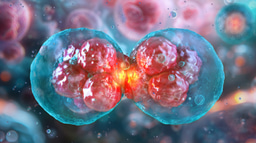Maternal preconception functionally suboptimal status of thiamine and child behavioural problems
Published in Healthcare & Nursing

Maternal nutritional status and child behavioural problems
Child and adolescent behavioural problems are influenced by various factors, including genetics, maternal education, maternal depression, parenting, and adverse socio-economic environment. Maternal nutritional status before pregnancy has been linked with pregnancy and child health outcomes, and nutritional supplements are commonly recommended to promote better pregnancy outcomes. In particular, maternal preconception nutrition may influence brain development, thereby affecting offspring neurodevelopmental outcomes such as behavioural disorders. However, due to the challenges of prospectively following women who are not yet pregnant, few studies have investigated the associations of preconception biomarkers, alone or in combination, with child neurodevelopmental outcomes. In this study, we leveraged a prospective, pregnancy and child cohort, the Singapore PREconception Study of long-Term maternal and child Outcomes (S-PRESTO) cohort, to investigate the relationships between preconception nutrition-related biomarkers and child behavioural problems.
Key findings
We have identified associations of maternal preconception circulating biomarkers with child behavioural symptoms scores at age 3 years. Specifically, we found that a biomarker cluster of thiamine, thiamine monophosphate (TMP), pyridoxal phosphate, pyridoxic acid, and pyridoxal was positively associated with internalizing problems and thiamine was driving the cluster association. Our findings of higher preconception free thiamine and TMP levels associated with internalizing problems were heavily influenced by higher scores on the somatic complaints and anxiety/depression scales, and pervasive developmental problems, which are mainly characterized by delays in the development of socialization and communication skills.
Functionally suboptimal status of thiamine and behavioural problems
Thiamine deficiency is typically viewed as a health problem due to poor diets in low- and middle-income countries and excessive alcohol consumption in high-income countries, which have a low prevalence in our population and preconception cohort. However, the true risk of insufficiency and/or suboptimal status of thiamine in women of reproductive age is not well understood. In blood, thiamine diphosphate (TDP) predominantly presents in erythrocytes, while free thiamine and TMP are found primarily in plasma. Free thiamine and TMP levels in plasma are sensitive to recent intake. Thiamine status, instead, is indicated by erythrocyte TDP or the functional assessment of erythrocyte transketolase (ETK) activity. Nevertheless, consensus about case definitions for thiamine deficiency has not been achieved and various thresholds had been used in previous studies. High intakes of caffeine, for example from coffee and tea, also interfere with thiamine absorption. Given that high-carbohydrate diets and consumption of sugar-sweetened beverages, coffee, and tea is popular in Singapore, demand for TDP may be generally high and thiamine absorption may be suboptimal in the population. This may lead to the functionally suboptimal status of thiamine. On the other hand, given that free thiamine is converted into TDP once absorbed, a higher preconception free thiamine may be a result of limited synthesis of TDP.
In brief, our observation may suggest that functionally suboptimal TDP is associated with behavioural problems. Further investigation focusing on the functional suboptimal status of TDP is warranted. We also evaluated the role of neonatal brain microstructure in the observed relationships but we did not find evidence supporting mediating mechanisms, further studies investigating other potential mediating mechanisms are needed.

Follow the Topic
-
Translational Psychiatry

This journal focuses on papers that directly study psychiatric disorders and bring new discovery into clinical practice.
Related Collections
With Collections, you can get published faster and increase your visibility.
Moving towards mechanism, causality and novel therapeutic interventions in translational psychiatry: focus on the microbiome-gut-brain axis
Publishing Model: Open Access
Deadline: May 19, 2026
From mechanism to intervention: translational psychiatry of childhood maltreatment
Publishing Model: Open Access
Deadline: Feb 28, 2026






Please sign in or register for FREE
If you are a registered user on Research Communities by Springer Nature, please sign in